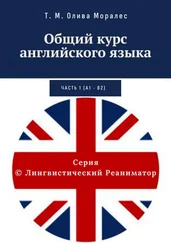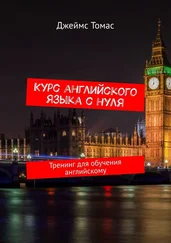in everyone's point of view and react to comments appropriately, trying to keep the conversation
going.
XV. Describe these pictures: Use the following:
a) to come home greatly excited, to wave some slips of paper in the air, to be delighted, to
have great fun playing with one's toys; b) to drag smb. along the street, to howl at the top of one's
voice; c) to have excellent seats, "Wilhelm Tell" was on, the music was so loud you couldn't hear a
word, to be bored; d) that was much better, to catch smb.'s interest, a bow [bзv] and arrows, to shoot
off ah apple from...; e) in very high spirits, to chatter about one's impressions, to be pleased; f) to be
shocked, the child's imagination was certainly haunted by the opera or, rather, by one particular
scene, the poor teddy-bear, to look extremely uncomfortable.
XVI. Film "Mr. Brown's Holiday". Film segments 9 "One More Substitute"
(Yeovil) and 10 "Back at Ноmе" (London), a) Watch and listen, b) Do the exercises
from the guide to the film.
STUDIES OF WRITTEN ENGLISH
IX
One of the most effective exercises in good writing is a free composition.
Free composition is a piece of independent writing (3—5 pages in length). You are free to
select the subject, to decide on the pattern of writing (narrative, descriptive, argumentative,
expository), and to choose writing technique (keywords, topic sentences, connectives and
transitions).
In the process of free composition there are three main points to consider: what to say —
selection of a subject and the theme, how to arrange the material in the best order, and how to
express your thoughts in the best possible language.
The theme and subject should be selected with care so that you know exactly what you mean
to write about and what is the purpose of writing — is it describing, entertaining, persuading or
instructing?
"The British Isles" is, for instance, of descriptive nature, "How We Kept Mother's Day" is
both entertaining and instructing, Judy's letters are sincerely persuading.
Composition must be unified and complete. It must have a beginning, middle, and end. It
must be coherent; that is, systematic in its presentation, with reference to time, to point of view, and
to situation. It must reveal your attitude or judgement towards material and characters or towards
your reader, or both.
The beginning, or introductionexpresses the occasion, the problem, and the purpose. A
good beginning attracts the reader's attention, his interest and sometimes his emotions (see the
beginning of "How We Kept Mother's Day" or of "A Friend in Need").
The middle or body of the composition in its turn makes the problem clear through narration,
description, argument or exposition (compare different passages from this textbook). Usually the
middle includes the details. It may have the turning point or climax describing the moment of
greatest emotions.
The end or conclusionis the result of that clarification. The author provides an answer to
the main question. It is usually marked by a summary statement emphasizing the message (compare
the final sentences in "A Day's Wait", "How We Kept Mother's Day", "Rose at the Music-hall").
Assignments:
1. Write a composition explaining the message of the passage "Rose at the Music-ball.
2. Write a composition following the events described in the pictures on pp. 338-339.
3. Write a composition describing your visit to a theatre and your impressions of the
prevailing atmosphere,
4. If you have become proficient at writing compositions as an exercise you may turn to
teaming how to write compositions as art. Try your hand at writing a composition about the
best way to comfort your mother (father, child, sister or brother, friend).
Evaluate your composition according to the main principles of good writing: unity,
coherence, and emphasis.
LABORATORY EXERCISES (II)
1. Listen to the text "Drama, Music and Ballet in Britain", mark the stresses and tunes.
Repeat the text following the model.
2. Record the dialogue "At the Box-Office" in pairs. Listen to the records and discuss
them in class.
3. Listen to the dialogue "Pantomimes", mark the stresses and tones. Repeat it
following the model.
4. Write a spelling-translation test:
a) translate the phrases into English;
b) check them with the key.
5. Respond to the following questions or statements and correct them if necessary.
6. Listen to the story. Write ten questions about the text. Suggest a title for the text and
give reasons for your choice. Find evidence in the text to support the following statements.
CURIOSITY QUIZ FOR EAGERS
1. What do you know about K. S. Stanislavsky, his role in the history of the Moscow Art
Theatre and bis influence on world theatre?
2. Where do the following quotations come from? Who says the lines? Under what
circumstances?
a) The time is out of Joint Oh, cursed plight. That ever I was bom to set it right '
b) Beware, my lord, of the jealousy;
It is the green-eyed monster, that doth mock The meat it feeds on.
c) How sharper than a serpent's tooth it is To have a thankless child.
3. What do you know about the problem of Shakespeare's authorship?
4. What do you know about the Sovremennik Theatre? about the Lenkom Theatre?
about the Tovstonogov Theatre in St Petersburg?
5. Listen to a text connectid with the topic "Theatre".
SUPPLEMENT
A. CLASSROOM ENGLISH
I. Pupil Language
This section contains a list of phrases that pupils might be expected to use during an English
lesson.
1. Following the Lesson
I'm sorry, I didn't understand.
You're speaking too quickly.
I didn't get that down. Could you say it again?
Could you repeat the last bit?
I missed the beginning of what you said.
Could you explain again, please?
Shall we do the exercise in our work books?
Are we supposed to finish this off at
home?
What do we have to do next?
Could you write it up on the board,
please?
Is it my turn? (Am I next? Shall I start?)
2. Correctness of Answers
Why can't you say ...? Is this a mistake?
What's wrong with (saying)...?
Why did you mark this wrong?
Why did you put a line under this
word?
Isn't there a mistake in sentence 3?
Shouldn't there be an article?
I think you've made a mistake on the board.
3. Language Questions
How do you spell...? Are there two ‘l’s or only one?
How do you pronounce the next word?
I'm not sure how to say the next word.
Could you use the future (passive) here?
Can we leave this out (miss this out) ?
Is there a shorter (better) way of saying this?
Читать дальше
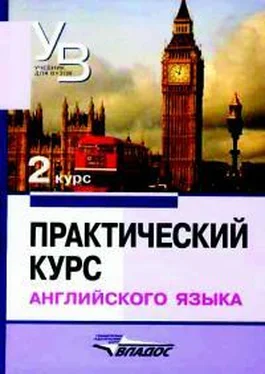
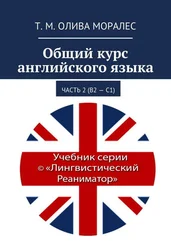

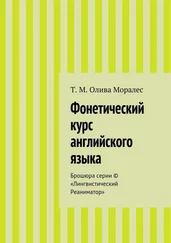
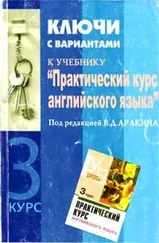
![Владимир Аракин - Практический курс английского языка 3 курс [calibre 2.43.0]](/books/402486/vladimir-arakin-prakticheskij-kurs-anglijskogo-yazyk-thumb.webp)





